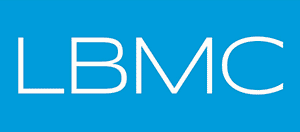Drummonds spoke with Nashville Business Journal Publisher Lori Becker at the NBJ’s Economic Outlook 2024 event Nov. 9 on what businesses are predicting for the upcoming year and what they should keep an eye on.
The talk centered around the results of a study conducted by American City Business Journal, in partnership with LBMC. The study ran from Sept. 7-20 and included 185 participants. The survey link was sent to those who opted-in to receive email communications from the Nashville Business Journal; additional recruitment took place on the Nashville Business Journal website.
In the study, 70% of the participants expect national economic conditions to continue to deteriorate over the next six months and half expect access to capital to decline.
“If you’re running out of capital, God bless you,” Drummonds said. “If you’ve got losers or things that are just not really going anywhere, it’s time to be done.”
The main indicators an economy is in trouble are issues with access to money, transportation and banking, according to Drummonds. He’s already begun to see a key indicator of economic issues in his own business, as his firm is having to call clients one to two times more to collect funds than in the past.
LBMC is the largest technology services firm in Nashville, according to Business Journal research, and the second-largest accounting firm. The firm has approximately 10,000 clients across a range of industries including health care, manufacturing, technology and private equity.
Drummonds said Nashville is doing well in comparison to the rest of the country, and three quarters of business leaders surveyed expect to grow their companies in the coming year, according to the research.
“Companies are having record years because of inflation,” Drummonds said. “If you’re not doing well in Middle Tennessee, you need to take a hard look at yourself in the mirror because if you can’t do well in this business environment, you really need to rethink the thesis of your book.”
More than half of participants in the survey plan to or already have raised the prices of their goods and services due to inflation.
But Drummonds cautioned that inflation could reach a point where consumers can no longer afford products or services, which “doesn’t necessarily translate into profits.”
Workforce and technology
The three main areas businesses plan to increase their spending in 2024 is employee training, marketing and technology, according to the research.
Since the pandemic, Drummonds said businesses have learned a lot when it comes to the importance of employee retention.
“Some of those [years] were very much the school of hard knocks,” Drummonds said.
Nearly 70% of respondents plan to increase their workforce, according to the research. But maintaining the current workforce is going to be critical when it comes to that growth, according to Drummonds.
But in some cases, adding technology will be instrumental in reducing workforce workload. And yes, that includes AI.
“We just can’t continue to throw more arms and legs at things,” Drummonds said. “People are realizing there’s a better way.”
At the end of the day, Drummonds said there will be winners and there will be losers.
“Inflation, I don’t really see that slowing anytime soon,” he said.
Originally posted by NBJ on November 10, 2023.
